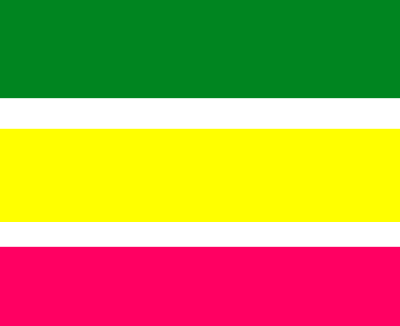SUBJECT AIM
To train students with the skills of craft and its implication in product development.
To develop a mutual respect about the crafts and craftsperson.
To impart the material knowledge about the craft and its resources.
To allow students to interact with the artisans and understand the semiotics and communication.
To be sensitive towards the issues related to sustainability in the craft areas
To train students about the rich heritage of Indian craft and its impact.
LEARNING OUTCOMES OF THE SUBJECT
Knowledge
To acquire knowledge of tools and techniques involved in process of creating samples of selected craft cluster.
Skill
Acquiring skill set of available craft during workshop for further practice.
Develop ability to understand properties/behavior of material while working with craft
Skill to articulate the sustainability issues in the craft studies
Synthesis
Acquiring traditional methods of making artifacts and understanding behavior of material
Introduction
Manjusha Art is folk art of Ang region which is based on Folklore of Bihula-Bishari. Ang region in modern era known as Bhagalpur. It is one of the popular art form of Bihar.
What is Manjusha ?
The name Manjusa is also associated with an elaborate story, a goddess and also a festival celebrated in Bhagalpur. The Sanskrit word "Manjusa" means a box and Manjusas are temple shaped boxes, made of bamboo, Jute-Straw and Paper inside which the devotees keep their ceremonial materials. These boxes are however illustrated with paintings that tell a tale. The tale is that of Bihula who saved her husband from the deity's wrath and a snake-bite and also of Bishahari or Mansa, the snake goddess known for her anger when displeased but also her fierce protectiveness when propitiated.
Characteristic of Manjusha Art
1. Three colors used in Manjusha Art.
2. In Manjusha Art Borders are very Important.
3. Manjusha Art is a Line drawing Art.
4. Manjusha Art is a Folk Art.
5. Manjusha Art is a Scroll Painting.
6. Manjusha Art is completely based on folklore of Bihula-Bishari.
7. In Manjusha Art Characters are displayed as X letter of English Alphabets.
8. Major Motifs of Manjusha Art - Snake, Champa Flower, Sun, Moon, Elephant, Turtle, Fish, Maina Bird, Lotus, Flower, Kalash Pot, Arrow Bow, ShivLing, Tree, etc.
9. Major Characters of Manjusha Art - Lord Shiva, Mansa DeVi (Bishari), Bihula, Bala Lakhendar, Hanuman, Chand Saudagar, etc.
10. Borders in Manjusha Art - Belpatr, Lehariya, Triangle, Mokha, Snakes.
11.Manjusha Art portrays cultural essence and rituals of Ang region.
12.In Manjusha Art borders are very important, every painting must contains one or more border Manjusha art is very vibrant and eye catching design & Colours.
History of Manjusha Art.
This art was earlier done by only two familes the Kumbhakar caste and the Malakar caste. The Kumbhakar caste used to make the pots on which the manjusa art is painted and worshipped during the festival. The Malakar caste makes the actual "manjushas" and paint the manjusa art on this strucutres. There is another caste called the Kashira caste, they used to make the pots out of "peetal"/brass. There are only two families left who still practice this art.
Earlier the Pandit family Cheddhi and Basant Pandit used to make the manjusa art for the temple, for this service all their expenses were taken care of by the village.
This art has been prevalent in Bhagalpur for a long time but between 1931-48, it was brought to the forefront. In this period during the British rule, an ICS officer by name W.G. Archer and his wife started finding out more about Madhubani painting and Manjusha art.
He fell in love with the art form. W.G. Archer put a collection together of Manjusa art and had an exhibition in The India Office Library in London which became part of the Archer Collection. It was at this time that Manjusa art gained international recognition. But at that time due to the British rule the artisans could not flourish. After this golden period, Manjusa art seemed to be fading away in the background and was being practiced only by some people. In 1984 the Bihar government made an initiative called "Jansampoorna Vibagh" in which they went to the villages of Bhagalpur and showed them slideshows of Manjusa art and educated people about this traditional art form in the hope of reviving it.
Colours in Manjusha Art.
Significance of Colors
Pink - Offering (Care, Relation, Victory)
Green - Happiness (Nature & Health, Dark green associated with Financial Businesses)
Yellow - Prosperity (Joy, Young, Fun, Happy Feelings, Confidence, Boost enthusiasm, Optimism) Also for cultural and Vedic Progress.
Impact of Manjusha Art Colors on Human Life/Mood
Pink - Increase Energy, Pulse, Blood Circulation. It gives peace, relaxation, and satisfaction. Pink color reducese erratic disorders.
Green - Mental & Physical Relaxation, Out from depression, nervousness and anxiety.
Yellow - Improve Nervous System, Memory and concentration. Enhance Communication.
Background:- Most of Paintings created on white Background.
Basic Motifs in Manjusha Art.
Motifs are basic figures and objects used in this Art form, as we know Manjusha Art have some different techniques and traditions to represent the character. Like Men & Women are represents in the form of 'X' character. Motifs are building blocks of any art, it convey how to illustrate any art form in its native style.
Some Popular Motifs of Manjusha Art:-
Men, Women, Horse, Kalash/Pot Leafs, Plants, Flora & Fauna of Ang Region, Lord Shiva, Lord Ganesha, Peacock, Ship, Manjusha, Shivling, Sun, Champa Flower, Fish, Elephant, Maina Bird, Turtle, Snake etc.
Manjusha Art and Madhubani Art both are the famous art form of Bihar.
These are the some basic differences -











.jpeg)
.jpeg)
.jpeg)
.jpeg)
.jpeg)
.jpeg)
.jpeg)
.jpeg)
.jpeg)
.jpeg)
.jpeg)
.jpeg)
.jpeg)
.jpeg)
.jpeg)
.jpeg)
.jpeg)
.jpeg)
.jpeg)
कोई टिप्पणी नहीं:
एक टिप्पणी भेजें